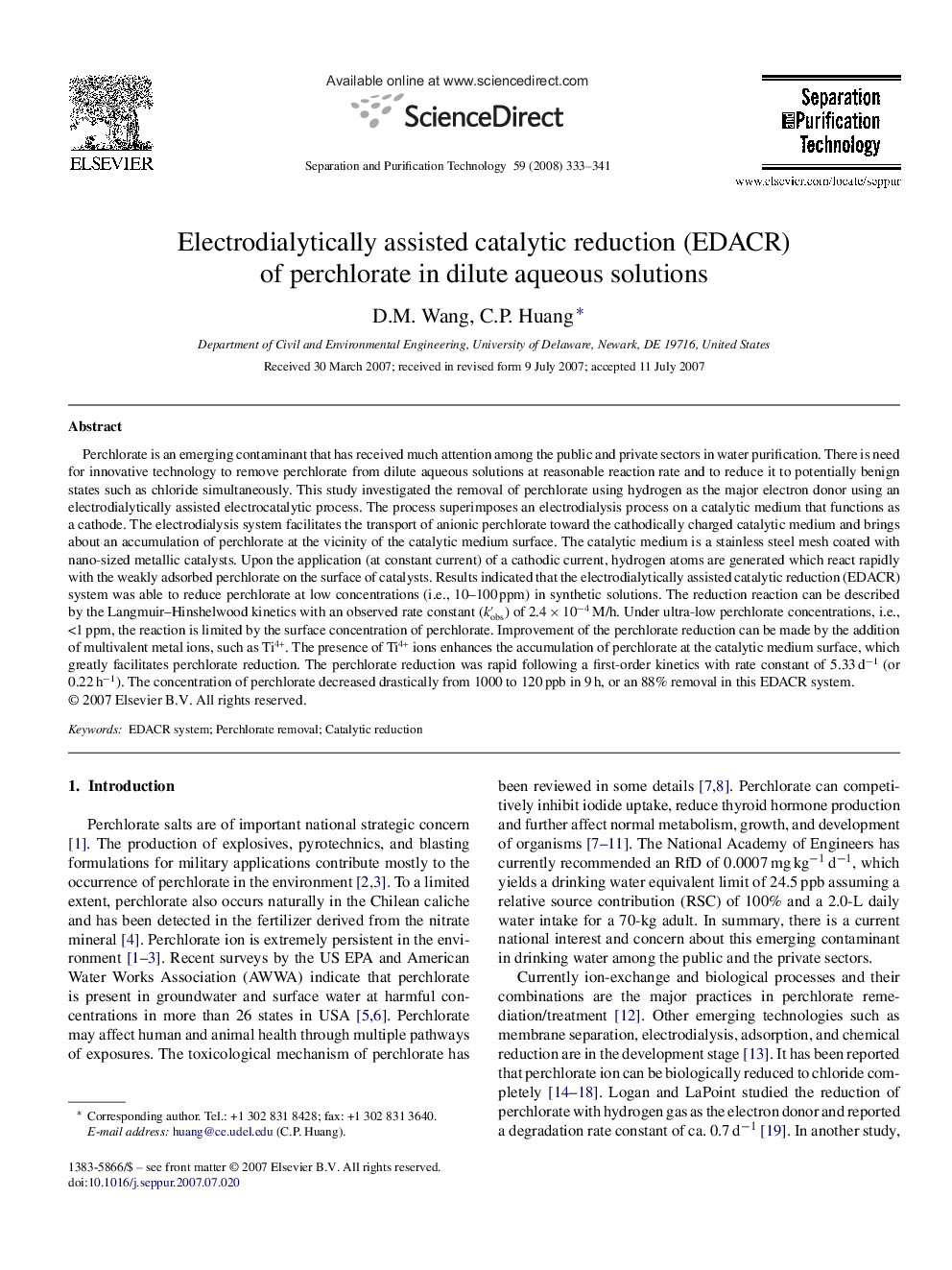| کد مقاله | کد نشریه | سال انتشار | مقاله انگلیسی | نسخه تمام متن |
|---|---|---|---|---|
| 643725 | 884386 | 2008 | 9 صفحه PDF | دانلود رایگان |

Perchlorate is an emerging contaminant that has received much attention among the public and private sectors in water purification. There is need for innovative technology to remove perchlorate from dilute aqueous solutions at reasonable reaction rate and to reduce it to potentially benign states such as chloride simultaneously. This study investigated the removal of perchlorate using hydrogen as the major electron donor using an electrodialytically assisted electrocatalytic process. The process superimposes an electrodialysis process on a catalytic medium that functions as a cathode. The electrodialysis system facilitates the transport of anionic perchlorate toward the cathodically charged catalytic medium and brings about an accumulation of perchlorate at the vicinity of the catalytic medium surface. The catalytic medium is a stainless steel mesh coated with nano-sized metallic catalysts. Upon the application (at constant current) of a cathodic current, hydrogen atoms are generated which react rapidly with the weakly adsorbed perchlorate on the surface of catalysts. Results indicated that the electrodialytically assisted catalytic reduction (EDACR) system was able to reduce perchlorate at low concentrations (i.e., 10–100 ppm) in synthetic solutions. The reduction reaction can be described by the Langmuir–Hinshelwood kinetics with an observed rate constant (k′obsk′obs) of 2.4 × 10−4 M/h. Under ultra-low perchlorate concentrations, i.e., <1 ppm, the reaction is limited by the surface concentration of perchlorate. Improvement of the perchlorate reduction can be made by the addition of multivalent metal ions, such as Ti4+. The presence of Ti4+ ions enhances the accumulation of perchlorate at the catalytic medium surface, which greatly facilitates perchlorate reduction. The perchlorate reduction was rapid following a first-order kinetics with rate constant of 5.33 d−1 (or 0.22 h−1). The concentration of perchlorate decreased drastically from 1000 to 120 ppb in 9 h, or an 88% removal in this EDACR system.
Journal: Separation and Purification Technology - Volume 59, Issue 3, 1 March 2008, Pages 333–341